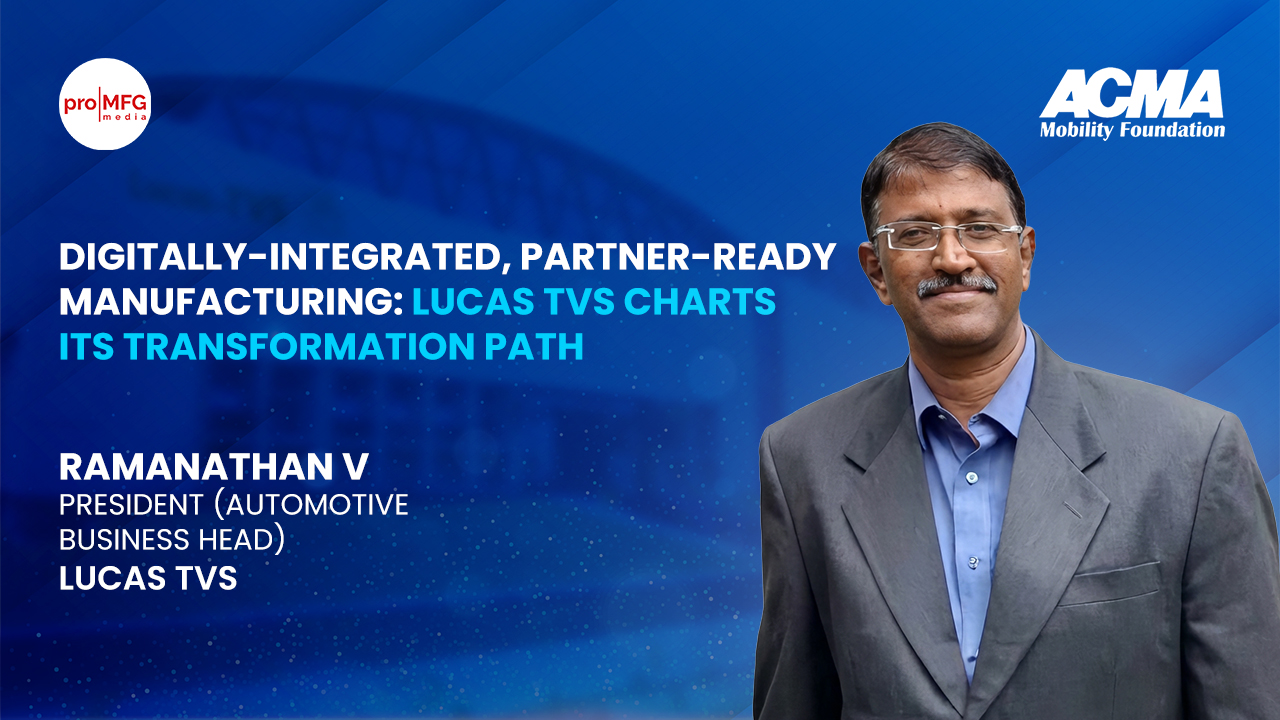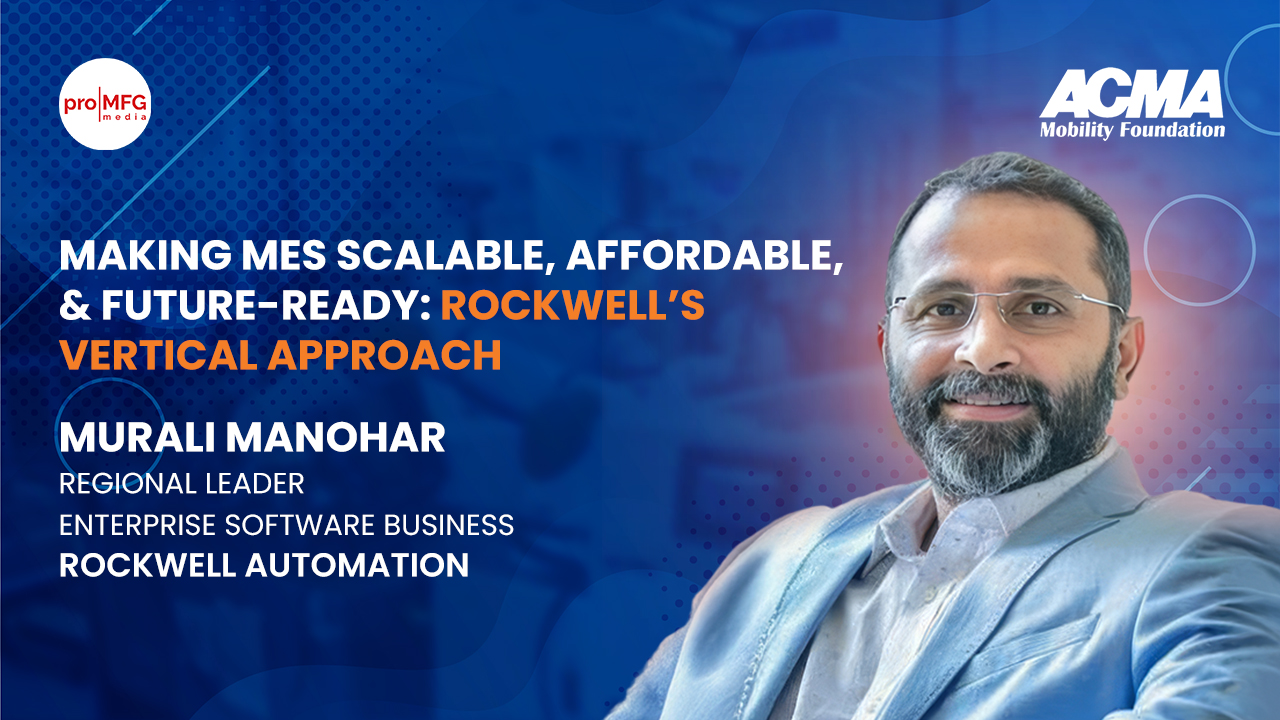Keeping People First Is the First Step towards Digitalization: Kiran Deshmukh
#Altair #Sonacomstar #DigitalTransformationAimed at future-proofing digital transformation for the new manufacturing world, the second edition of the Pro MFG Digital Transformation Senior Leadership Roundtable, powered by Altair had Mr. Kiran Deshmukh, Group CTO, Sona Comstar as one of the esteemed speakers.
The second edition of the Digital Transformation Senior Leadership Roundtable, organized by Pro MFG Media and powered by Altair was held on August 4. IIT-Bombay and IIT-Indore led IndAC- SM is the esteemed knowledge partner for the Pro MFG Digital Transformation series, powered by Altair.
Aimed at connected thinking for future-proofing digital transformation for the new manufacturing world, the panel for the roundtable consisted of seasoned industry experts from various organizations.
Highlighting the conflicts among the prototyping, design and manufacturing teams at various stages of the product life cycle, Mr. Kiran Deshmukh, Group CTO, Sona Comstar, went on to talk about a specific use case wherein technology has benefited mass production and digital transformation, thereby leading to a smooth product launch experience.
Sharing his invaluable insights, Mr Deshmukh emphasized that one of the problems faced by typical manufacturing setups is connecting the shop floor to the top floor. Traditionally, in manufacturing companies, especially in case of automotives, this data is collected manually. With the advent of ERP (Enterprise Resource Planning), the data had to be transferred in digital form. What was done all along words at the end of the shift, you collect those physical paper dockets, and you enter them into the computer. So, you have a host of data entry operators who are gathering all these sheets and then entering them on the terminal, he added.
Mr. Deshmukh went on to highlight the kind of wastage happening in terms of manpower, and the possibilities of manual errors in filling up and reading the data. He stressed that the problem is that one can't really get data in real time, which affects the decision making process. He went on to mention that there is no manual intervention for data across the plants at Sona Comstar and that all the production data is captured automatically into the SAP with complete visibility.
"To be able to benefit from digitalization, one needs to do certain things, which have nothing to do with technology. And this is exactly what we did. We took five steps before we started the journey", he stressed.
In this journey, the first step taken by Sona Group was following the 'people first' principle. Most of the time, one typically forgets that there are systems already in place. And it can make people resist anything new. Hence, it is important that people on the shop floor, middle management executives and frontline leaders first understand the technological changes that are going to take place. And therefore training and education of employees, incentivizing them for the rollout and carrying out activities to promote transformational intent through clear communication.
"I think it is quite reasonable when we are doing something like this for employees to be nervous about the change for several reasons. So, what we did was, we ensured that all these concerns were addressed by providing appropriate support and training", Mr. Deshmukh reiterated.
The next four steps mentioned by Mr. Deshmukh are as below:
Clarifying Why: This entails having a clear idea as to why one wants to go ahead with the transformation or is it just because there is a trend around it. Having clear goals and objectives is a very crucial part of digital transformation.
Establishing a Common Understanding: The technology space today has many terms like IoT, Machine learning, AI, Cloud Computing, etc that many fail to understand in totality. Since there’s a lot of hype about these terms, it is important to create a common understanding among the employees at different levels, especially at the shop floor level. This is necessary in order to avoid misalignment within team members so as to ensure that they can remain focused on the digitalization goal with a clear understanding of these terms.
Creating success Stories: It is indispensable to build that confidence within the team without showing them proofs first hand. Therefore, it is important to start with small processes of digitalization that require minimal resources and implement them. This, in turn, helps the team with a clearer picture and instills confidence to go ahead with bigger goals.
As Mr. Deshmukh says , “ With the first success story created, it can snowball into many more success stories.”
Equipping the team for the Change: From the fear of unknowns, clashes of KPIs, reward expectations to the fear of failure, worries about job security, there are multiple non-technological challenges in the minds of people. It is imperative to address these issues with adequate support and clarity in order to kickstart a smooth transformation process.
Summing up his decades of experience bringing technological transformation, Mr. Deshmukh underlined the first hurdle to digitalization is more human than digital. Having said that, he emphasized on the importance of maintaining complete transparency and proper communication related to digital transformation among employees at all levels, which in turn, shall lead to a smooth transition process across the organization.
NEWSLETTER
TRENDING ON PRO MFG
MORE FROM THE SECTION









